「 の記事 」 一覧
-
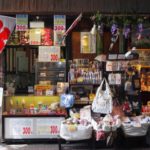
-
What is "Omiyage"? Japan's Souvenir Giving Culture
What is Omiyage? It is Japanese Gift Giving Culture! Most of you may buy souvenirs when you take a trip away from home, so do the Japanese. However, what you call “souvenir” is not equal to what Japanese people call “souvenir”- It's "Omiyage"(お土産)in Japanese. So, what is “Omiyage” and what makes it a distinctive aspect of Japanese culture? What are the differences between souvenir and omiyage? Let's learn Japanese curious "omiyage culture" and see best omiyage ideas from popular sightseeing areas- Tokyo, Osaka, Kyoto, Hokkaido, and Fukuoka. What is the definition of omiyage? As those who have come to Japan ...
-
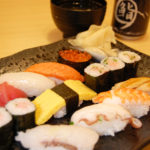
-
Guide of 8 Different Types of Sushi: from Nigiri to Sasazushi
2018/01/30 food, sushi, japanese food, japanese cuisine
Complete guide of Different Types of Sushi! When you think of Japanese food, the first dish that comes up to your mind would be sushi. Yes, sushi is one of the typical Japanese dishes, and Japanese people enjoy eating sushi with friends or family. But did you know that there are many types of sushi? Other than nigiri and rolled sushi which may be familiar to you, but many different types of sushi that you have probably not heard of are found in Japan. Today Japadventure introduces 8 different types of sushi. What is sushi? First of all, what is ...
-

-
9 Traditional Japanese Masks and their Meanings
2018/01/28 japanese, culture, traditional, masks
Traditional Japanese Masks-History, Types and Meaning The Japanese people today are known to wear surgical masks in public for the protection of disease or for the feeling of privacy. As well as a modern type of masks, traditional masks have been playing an important role in the Japanese society. Traditional Japanese masks are either archetypes borrowed from myths and gods or representing emotions, and they have been used in Shinto shrine festivals, rituals, and traditional drama called Noh. Some of them are quite popular Japanese masks that you can still see today. History of Japanese Masks Masks were originally used ...
-

-
This is What the Japanese Eat for Breakfast!
2018/01/23 food, japanese food, traditional, breakfast
What is Traditional Japanese Breakfast lkie? In many parts of the world, a nutritious, well-balanced, freshening-you-up breakfast is considered to be important, so is in Japan. As people get busier and busier, people have come to skip the breakfast or have a quick, easy breakfast, but still, Japanese people consider breakfast as important, and they spare time to prepare nutritionally well-balanced breakfast. Each country has a traditional style breakfast, and you can see the essence of that country and culture from it. Traditional Japanese breakfast may be different from other styles of breakfast you have ever seen. What is traditional ...
-

-
25 Japanese Curious Culture Facts; Introduction to Japanese Culture
Curious about Facts about Japanese culture? Japanese culture is often referred to “unique” and “distinct” from other parts of the world, especially western countries. There are habits, customs, traditions, and ways of thinking observed only in Japan, which catch many people’s interests. Japan is a country surrounded by the ocean, and not many contacts with other countries enabled Japan to develop cultures inside the country, which made Japanese culture distinct. Here we introduce 25 curious facts about Japanese culture which you may have not known. 1.Four different writing systems Japanese language has four different writing systems: hiragana, katakana, kanji, and ...
-
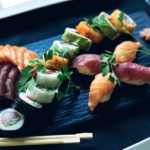
-
Nigiri vs Sashimi vs Maki: Definitions and Differences
2018/01/14 food, sushi, japanesefood
What are the differences between nigiri, sashimi and maki? Now sushi has become famous and popular worldwide, and sushi restaurants can be found almost any places in the world. Today, you have come to a sushi restaurant for the first time to try what it tastes like. You open the menu, and read it from the top, looking for what would tease your tongue- But, there are so many words that you have never come across. What is nigiri? What is sashimi?What is maki? Are these all sushi? For those who have experienced this kind of situation, we will explain ...
-

-
8 Different Types of Japanese School Uniform: Unique History and Design
2017/12/28 japanese, culture, school uniform, fashion, school
Let's learn about Japanese Seifuku (School Uniform)! Japanese school uniform is known for its fashionable appearance. Most schools in Japan have their uniforms, and the design varies depending on the school. For Japanese students, school uniform is not only for showing which school a person belongs to. It has become one of the fashion items due to the change of school uniform designs and fashion trends. Many Japanese school girls add accessories to their uniform to express their originality. Now, you will see how Japanese school uniform has been developed and changed over time, and how Japanese students enjoy their ...
-
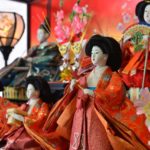
-
Hinamatsuri - Japanese Dolls Festival for Girls
2017/12/27 japanese, culture, hinamatsuri
Traditional Japanese Doll Festivel "Hinamatsuri" Hinamatsuri is one of the annual events in Japan taken place on March 3rd, which has a long history back in as early as 10th century. As Hinamatsuri is also referred to Girl's day, families pray for the good fortune, health, and growth of the girls. Here you will enjoy the traditional custom of Japan with the exploration of the origin, practices, and food of Hinamatsuri. What is Hinamatsuri? Hinamatsuri, also called Doll festival or Girl's festival is a festival when people pray for health, growth, and happiness of girls. It takes place on March ...
-
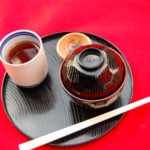
-
25 Common Japanese Desserts that Amaze You
Top 25 Traditional Japanese Desserts: Wagashi! Few people might associate Japanese food with its desserts, but Japan has a wide variety of desserts from traditional Japanese sweets so-called Wagashi, to Western-influenced Japanese sweets. Japanese people are actually a big fan of desserts from small kids to adults, as much as they have a phrase "betsu-bara", or "second stomach", which means they can still have room for desserts even when their stomach is already full. Japanese were making sweets long before sugar had arrived to Japan. They created desserts using ingredients available to them, such as mochi, anko (sweet red bean ...